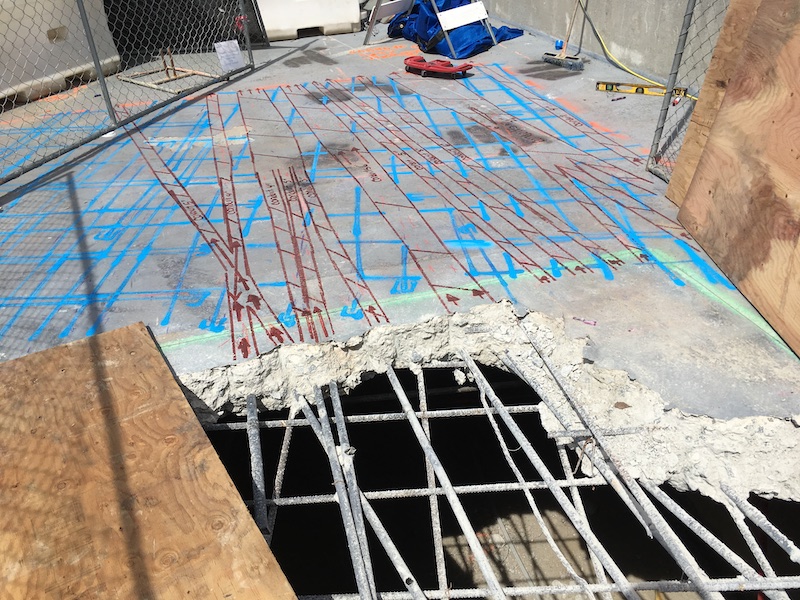Enhance Construction Safety And Security with Professional Concrete Scanning
Enhance Construction Safety And Security with Professional Concrete Scanning
Blog Article
Reveal the Transformative Power of Concrete Scanning in Taking Full Advantage Of Performance and Security
Concrete scanning has emerged as a crucial device in the building and construction sector, using unequaled benefits in improving task performance and making sure security standards. The transformative power of concrete scanning exists in its capability to offer real-time data and in-depth insights, changing just how jobs are intended and implemented.
Value of Concrete Scanning
Ensuring the architectural stability and safety and security of building and construction jobs begins with the crucial step of carrying out complete concrete scanning. Concrete scanning is a non-destructive technique made use of to identify and map subsurface elements within concrete structures.
Additionally, concrete scanning aids in enhancing project timelines and spending plan by staying clear of unforeseen prices and hold-ups that may emerge due to unanticipated blockages within the concrete. Ultimately, investing in comprehensive concrete scanning is a positive technique that enhances both effectiveness and safety in construction tasks.
Just How Concrete Scanning Works
Concrete scanning runs as a crucial tool in construction jobs by utilizing innovative modern technologies to identify and map subsurface aspects without creating structural damages. Ground Passing Through Radar (GPR) and Electromagnetic Induction (EMI) are 2 main approaches used in concrete scanning. GPR jobs by releasing high-frequency radar pulses right into the surface, which recover when they encounter subsurface things or voids. The moment considered the signal to return suggests the deepness and location of the objects. EMI, on the various other hand, utilizes magnetic fields to recognize differences in product structures, such as identifying rebar or channels within concrete structures.
During the scanning process, the data collected is assessed in real-time, enabling immediate identification of prospective threats or challenges under the surface area. This details aids in decision-making, making sure that construction activities continue securely and effectively. In addition, 3D imaging software program can be utilized to create topographic maps of the subsurface aspects, further improving job preparation and implementation. By using these advanced technologies, concrete scanning substantially minimizes the danger of costly problems and injuries on construction sites.
Advantages of Concrete Scanning
Utilizing innovative scanning modern technologies in construction projects provides a multitude of benefits, enhancing both performance and safety on-site. One of the key advantages of concrete scanning is the ability to identify and locate ingrained items such as rebar, post-tension cables, and channels accurately. By identifying these elements before drilling or cutting right into concrete structures, the risk of unintended strikes is considerably decreased, avoiding potential injuries to employees and damages to the framework itself. Concrete scanning assists in preparation and creating extra successfully, as it offers accurate info regarding the location and depth of structural parts.

Study: Concrete Scanning Success

In an additional situation, a building company made use of 3D concrete scanning to assess the problem old concrete structures in a historic structure. The in-depth scans given important insights into the level of damage and helped prioritize maintenance efforts properly. By proactively addressing areas of concern determined with scanning, the company was able to prolong the life-span of the framework and guarantee passenger safety and security.
These study underscore the transformative power of concrete scanning in improving performance, precision, and security in building tasks.
Executing Concrete Scanning in Projects
Executing innovative scanning innovations during building projects has ended up being increasingly necessary for improving accuracy and safety. By incorporating concrete scanning right into job preparation and implementation, building groups can identify potential hazards, such as rebar or post-tension cords, hidden within concrete structures. This positive strategy minimizes the danger of accidents, delays, and expensive rework, ultimately resulting in extra effective task timelines and spending plans.
To carry out concrete scanning properly, task supervisors should collaborate carefully with experienced scanning specialists to figure out the most ideal scanning strategies for the particular job demands. Engaging scanning specialists from the beginning of a task makes it possible for the group to create thorough scanning plans that deal with vital areas of concern and guarantee thorough data collection.
Moreover, including concrete scanning into normal project operations can enhance decision-making processes, as real-time scan information gives instant insights into the problem of concrete frameworks - Concrete Scanning. This data-driven strategy promotes notified analytic and enables teams to make modifications quickly, fostering a society of performance and security throughout the project lifecycle

Verdict
In conclusion, concrete scanning plays a crucial duty in improving performance and security in building jobs. By utilizing sophisticated technology to discover and map out underlying structures within concrete, this process helps to stop pricey errors, make sure structural stability, and decrease dangers on website. With the ability to discover hidden aspects and provide exact information, concrete scanning shows to be an important device for enhancing project outcomes and making the most of general success.
Concrete scanning is a non-destructive technique used to detect and map subsurface aspects within concrete frameworks. In addition, concrete scanning check my reference aids in maximizing job timelines and spending plan by avoiding unanticipated costs and delays that might occur due to unpredicted blockages within the concrete. One notable situation research study entails a massive remodelling you can check here job where concrete scanning played a critical duty in making certain task success.In one more instance, a building business made use of 3D concrete scanning to analyze the condition of aging concrete structures in a historic building. By incorporating concrete scanning right into task planning and implementation, building and construction teams can recognize possible risks, such as rebar or post-tension cables, hidden within concrete frameworks.
Report this page